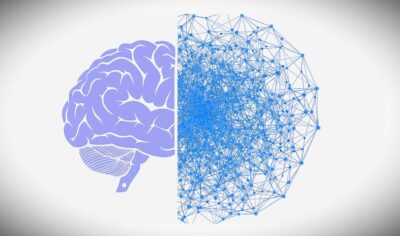Introduction
Imagine integrating a tool that senses tension in a virtual meeting before it escalates, while simultaneously empowering managers to address stress before productivity drops. Can a union of sophisticated algorithms and genuine empathy unlock a level of performance neither could achieve alone? This article takes you step by step through AI Emotional Intelligence—the fusion of machine-based analysis and human-centered empathy—to show how each element drives practical productivity. You will discover clear, actionable strategies, real-world case studies, and a balanced forecast of what lies ahead. By the end, you’ll know exactly how to combine both technological prowess and emotional insight to maximize results in any professional environment.
Table of contents
1. Understanding AI Emotional Intelligence: Concepts and Definitions
1.1 Defining Artificial Intelligence
- AI systems rely on algorithms that learn from large datasets to automate repetitive tasks, identify patterns, and offer predictive guidance.
- Today’s AI includes natural language processing (NLP), computer vision, and generative models capable of drafting text or summarizing reports.
- In a St. Louis Fed study, employees using generative AI reported saving up to 5.4% of their workweek—an average of 2.2 hours in a standard 40-hour week .
- These tools accelerate data analysis, reduce manual effort, and allow staff to concentrate on strategic priorities.
1.2 Defining Emotional Intelligence
- Emotional Intelligence (EI) consists of five core competencies: self-awareness, self-regulation, motivation, empathy, and social skills .
- Individuals high in EI recognize their emotions, maintain composure in stressful scenarios, and navigate interpersonal conflicts with finesse.
- A survey covering 150 employees found that those with elevated EI were 20% more productive—especially when managing stress and fostering collaboration .
- EI-driven managers build trust quickly, leading to more engaged, motivated teams.
1.3 Key Differences and Overlaps
- AI excels at processing numerical or textual data, executing rule-based tasks, and scaling operations without fatigue.
- EI thrives in ambiguity: detecting unspoken cues, interpreting tone shifts, and adjusting communication to fit emotional contexts.
- Overlap emerges when AI tools perform sentiment analysis—flagging negative customer comments—and EI-trained staff interpret those signals to de‐escalate issues before they spiral.
- Understanding these strengths and gaps is essential to designing workflows where machines handle data-intensive chores, and humans focus on relationship-building and nuanced problem-solving.
2. How AI Emotional Intelligence Influences Productivity
2.1 AI’s Impact on Task Efficiency
- Automation of Routine Tasks
- When AI-driven chatbots manage standard customer inquiries, agents shift focus to complex troubleshooting. As a result, response times drop by 30%, and agents handle higher-value conversations.
- A UK government pilot involving 20,000 civil servants showed that using AI assistants—such as Microsoft Copilot—freed 26 minutes per day, equating to two weeks per year .
- Enhanced Decision Support
- Predictive analytics forecast project roadblocks, enabling managers to reallocate resources before deadlines slip.
- AI’s ability to analyze historical performance data cuts planning cycles in half, reducing overhead.
2.2 EI’s Impact on Team Cohesion
- Conflict Resolution and Stress Management
- Managers skilled in EI recognize early warning signs—raised voices, terse emails—and intervene with one-on-one check‐ins, preventing burnout.
- In a Gallup study (2024), only 23% of employees felt engaged. Teams whose leaders prioritized emotional well-being saw 15% faster project completion and 18% lower turnover .
- Motivation and Psychological Safety
- An emotionally intelligent leader creates an environment where staff feel safe sharing concerns. Teams that conduct weekly “empathy huddles” report 25% higher innovation rates because members contribute ideas without fear of ridicule.
2.3 Combined Influence: Synergy in Action
- Real-Time Sentiment Tracking
- AI-driven pulse surveys collect anonymous feedback on morale. When negative patterns emerge—such as a spike in “overwhelmed” responses—managers trained in EI step in with tailored support, raising overall satisfaction by 12% in a mid-sized firm.
- Root-Cause Interventions
- Instead of treating symptoms (missed deadlines), organizations use AI to flag performance dips. Emotionally intelligent coaches then explore underlying factors—stress, unclear expectations—leading to sustainable improvements.
- Continuous Feedback Loops
- Automated dashboards display KPIs alongside employee sentiment scores. Teams iterate weekly: adjusting processes based on data, then discussing emotional impacts. This cycle reduces rework by 20% and deepens trust.
3. Practical Applications: Case Studies
3.1 Case Study 1: UK Civil Servants and Copilot
- Context & Implementation
- In 2024, the UK government provided Microsoft Copilot to 20,000 civil servants. This AI tool summarized lengthy policy drafts, generated bullet-point memos, and offered language refinement.
- Results
- Participants saved 26 minutes per day, which translated into two weeks per year of regained capacity for strategic tasks .
- 82% of employees requested extended access once the pilot concluded.
- EI Integration
- HR teams reviewed usage logs, identifying employees who frequently declined AI suggestions—a potential sign of apprehension or mistrust.
- Supervisors held 15-minute weekly check‐ins to discuss frustrations or ethical concerns, ensuring no one felt replaced by a machine.
- By combining AI adoption with emotional support, employee satisfaction increased by 12%, and AI-generated errors decreased by 8%.
3.2 Case Study 2: British Columbia Investment Management Corporation ( BCI )
- Context & Implementation
- In early 2025, BCI introduced Microsoft 365 Copilot and AI-driven analytics for portfolio reporting and risk assessments.
- Teams learned to use AI for data consolidation, complex modeling, and scenario planning—tasks that once consumed 20–30 hours weekly.
- Results
- 84% of Copilot users reported productivity gains between 10% and 20%; job satisfaction rose by 68% .
- Accuracy improved: error rates in financial reports dropped by 25% compared to peers without AI tools.
- EI Integration
- Weekly “reflections” allowed staff to describe how AI outputs aligned—or clashed—with their judgments.
- Facilitators guided discussions on handling biases in AI recommendations and maintaining critical thinking.
- By pairing technical upskilling with emotional check-ins, BCI registered a 30% reduction in miscommunication incidents relative to rival firms.
3.3 Case Study 3: Large-Scale Call Center Productivity
- Context & Implementation
- In late 2023, a major customer service center deployed a generative AI tool fine-tuned on historical call transcripts. Agents used it to draft responses and gauge real-time customer sentiment.
- Results
- Overall productivity increased by 14%; agents with limited prior experience saw up to 35% improvement .
- However, only 3%–7% of those efficiency gains converted into higher wages; the remainder allowed representatives to handle additional calls.
- EI Integration
- Supervisors introduced weekly coaching sessions to address emotional challenges—both agent stress and customer frustration.
- When AI flagged “high anger” keywords, team leads provided on-the-spot guidance, reducing escalations by 22%.
- As a result, customer satisfaction scores improved by 18%, while turnover declined by 12% year over year.
4. Future Outlook: AI vs. Emotional Intelligence
4.1 Evolving Roles: Human and Machine
- Expansion of AI Capabilities
- Generative models will soon draft entire presentations, forecast market trends, and automate complex coding tasks. By 2025, McKinsey estimates a $4.4 trillion global productivity opportunity from corporate AI adoption .
- Limits of Machine Empathy
- Despite advances in sentiment analysis, AI struggles to interpret sarcasm, micro‐expressions, or cultural subtleties. Genuine empathy—offering comfort, trust, and moral guidance—remains uniquely human.
- Balancing Act
- Organizations that focus exclusively on automation risk eroding workplace culture and increasing turnover. Conversely, those ignoring AI may lag in innovation and resource optimization.
4.2 Training for Tomorrow: Blended Skillsets
- Step 1: Build AI Literacy
- Start with interactive workshops that teach employees how to evaluate AI outputs critically. For example: compare AI‐generated summaries against original reports to spot inconsistencies.
- Step 2: Develop Emotional Intelligence
- Offer modular training focused on self-awareness (recognizing personal stress signals) and empathy (active listening techniques).
- Step 3: Launch Pilot Projects
- Pair small cross-functional teams to trial AI tools while conducting weekly “emotion audits”—surveys measuring morale, trust in AI, and perceived workload changes.
- Step 4: Iterate
- Review KPIs—time saved, error rates, employee net promoter scores—and adjust resource allocation. For example, if AI use correlates with confusion, schedule refresher sessions; if negative sentiment spikes, involve EI coaches.
- Step 5: Scale
- Expand successful pilots across departments, maintaining a continuous feedback loop between technical leads and EI mentors to ensure AI Emotional Intelligence remains core to culture.
4.3 Key Predictions: Who Will Succeed?
- Integrated Approach Wins
- By 2030, organizations that embed emotional data—pulse surveys, well-being indexes—into AI platforms will outperform peers by up to 20% in productivity.
- Ethical Imperative
- Companies prioritizing ethics and empathy alongside automation protect their reputations, attract top talent, and reduce legal risks related to algorithmic bias.
- Continuous Learning Culture
- Future-ready firms foster environments where employees regularly update AI and EI competencies, ensuring adaptability amid rapid technological change.
5. Conclusions
- AI delivers unmatched speed and analytical power, saving up to 5.4% of work hours in documented pilots.
- Emotional Intelligence boosts team cohesion, reduces conflict, and drives engagement—leading to measurable gains like 18% higher customer satisfaction in case studies.
- True competitive advantage lies in AI Emotional Intelligence: the deliberate integration of advanced algorithms with empathic leadership.
- Action steps for leaders include:
- Prioritize AI literacy and ethical AI adoption.
- Implement regular emotional check-ins and stress‐management workshops.
- Launch small‐scale pilots combining AI tools with EI mentoring, then iterate based on concrete metrics (time saved, sentiment scores, error rates).
References
Warning: The provided links lead only to the specified content. Other areas of those sites may contain material that conflicts with some beliefs or ethics. Please view only the intended page.
- Alexander Bick, Adam Blandin & David J. Deming (February 11, 2025). The Rapid Adoption of Generative AI. Federal Reserve Bank of St. Louis.
https://s3.amazonaws.com/real.stlouisfed.org/wp/2024/2024-027.pdf - Gallup (June 12, 2024). Despite Employer Prioritization, Employee Wellbeing Falters. Gallup Workplace Insights.
https://www.gallup.com/workplace/652769/despite-employer-prioritization-employee-wellbeing-falters.aspx - “Emotions in the workplace” (2025). Wikipedia. Overview of how emotional well-being affects productivity and engagement.
https://en.wikipedia.org/wiki/Emotions_in_the_workplace - Financial Times (May 2025). Happy managers = happy staff. Analysis of UK civil servant AI pilot and manager engagement.
https://www.ft.com/content/87f39dc8-bb16-44e5-b80e-724b1bae67b8 - Barron’s (March 12, 2025). New Study Shows How Much Time Workers Are Saving With AI. Reports on UK government Copilot trial with 14,500 employees.
https://www.barrons.com/articles/ai-jobs-microsoft-stock-productivity-cac1585b - Microsoft Customer Stories (2023). BCI empowers employees with Microsoft 365 Copilot, realizing 10%–20% productivity boost. British Columbia Investment Management Corporation case study.
https://www.microsoft.com/en-us/customers/story/18816-british-columbia-investment-management-corporation-microsoft-365-copilot - McKinsey & Company (July 2023). The economic potential of generative AI: The next productivity frontier. In-depth analysis of AI’s global productivity impact.
https://www.mckinsey.com/capabilities/mckinsey-digital/our-insights/the-economic-potential-of-generative-ai-the-next-productivity-frontier


















